Hatching Snail Eggs – 6 Simple Steps to Hatch Snail Eggs
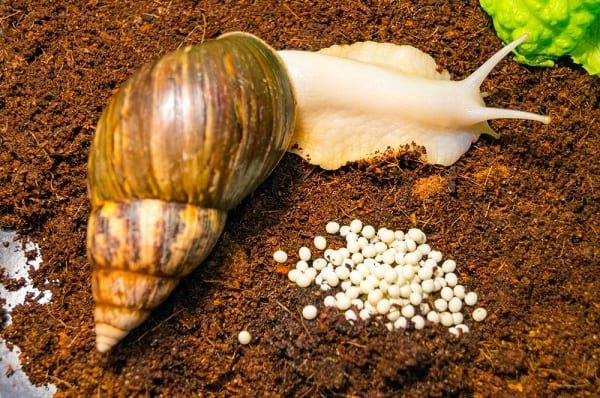
If hatching snail eggs has been difficult for you or you have been looking for a way to incubate your snail eggs so that you can hatch more snails for your snail farm, then this is for you.
The good news is that hatching snail eggs is one of the easiest things to do in snail farming that’s why you don’t get to see many articles that give clarity to this topic. Everyone assumes you should know how to hatch snail eggs by yourself without anyone teaching you.
In this article, I will take you through the entire process of setting up an incubator for snail eggs and also show you how to incubate snail eggs. But that’s not all…
I will also teach you how to care for the snail eggs while they are still in the incubator, and how you can track the hatching of new snails for business records.
At the end of this article, I have added a video that will show you practically everything you need to know about hatching snail eggs.
If you are ready, let’s delve right in!!
Snail Reproduction – How do snails reproduce?
Giant African Land Snails (GALS) are hermaphrodites, meaning they have both male and female reproductive organs. Even though snails are hermaphrodites, they still need to mate with each other to produce snail eggs.
The mating process is usually like a fight. You will think they would swallow themselves in the process.😂
After mating, each snail will lay its eggs in clutches and bury them in the dirt. Giant African land snails can lay between 40 – 100 snails per laying season.
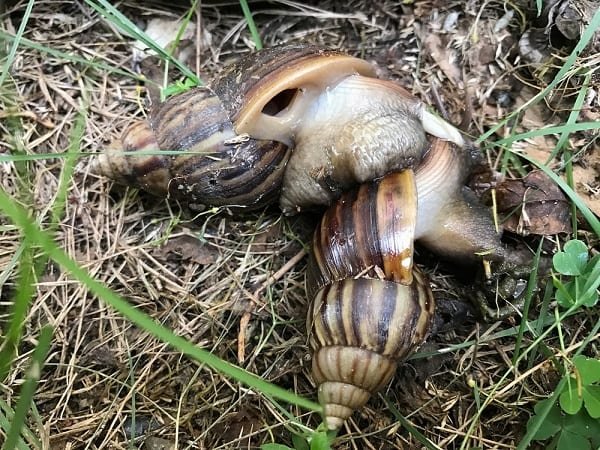
Here is something that will make you smile…
Did you know that snails are very intelligent? They don’t just lay their eggs in the dirt, they lay the eggs in the part of the soil that is suitable enough to incubate the eggs.
But unfortunately, commercial snails are in captivity, so the farm manager’s activities within the pen tend to disrupt the perfect condition of the snail eggs.
Interestingly, some of the snails are also very stupid (LOL). They just lay a clutch of eggs on the soil without covering it at all. So, this is why it is important for you to take out the eggs and incubate them in a separate snail pen.
Incubating the snail eggs by yourself increases your chances of having more hatched snail eggs.
Just in case you are yet to do so, you should read this article “How to start a snail farming business” for more insight into snail farming.
How to hatch snail eggs – The complete process of hatching snail eggs
The process of hatching snail eggs is a very simple one.
- First, collect the eggs from the snail pen
- Prepare an incubator for hatching the snail eggs.
- Incubate the eggs in the snail egg incubator
- Track the hatching progress of the snail eggs
- Take care of the snail eggs while they are incubating.
- Collect the new snail hatchlings and keep them in a new pen.
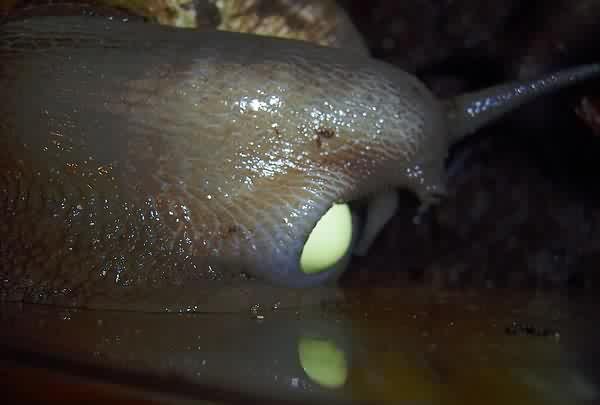
Step 1: Collect the eggs from the snail pen
When your snails start laying eggs, you need to check the pen frequently to pick out the eggs. To do this, you need a hoe to till the soil gently and pick out the snail eggs.
To avoid crushing the snail eggs, it is best to use a plastic spoon for picking the snail eggs and use a plastic tray to collect the eggs.
After collecting all the eggs, move to the next step to incubate the snail eggs.
Trending Now: Different Types of Snail Housing and How to Construct One.
Step 2: Prepare an incubator for hatching the snail eggs.
The incubator or hatchery for snail eggs is not a giant electrical device like that of poultry eggs. It is just a mixture of soil with a little bit of water in a Tupperware tub or in one of your snail pens in a commercial snail farming setup.
If you wish to have an exact proportion of water you need to mix with the soil, you should consider reading this research about the effect of water on incubating snail eggs. The researcher concluded that “Rural snail breeders are assured of high snail egg hatchability with the application of 15% water content (gram water per gram dry soil, weight per weight) during incubation of snail eggs buried in airtight containers to reduce evaporation.”
After getting the correct mixture of soil and water, choose how you want to incubate the snail eggs. For those who keep snails as a pet, using Tupperware with air holes in the lid is okay. For commercial snail farming, fill your pen with soil to a depth of 15 – 20cm from the floor. After that, use a hand fork or trowel to loosen the soil. You can also use your hand to loosen the soil since it’s not really thick. Loosening the soil before incubating the snail eggs makes it easy for snail hatchlings to emerge from the soil.
If you have followed the process to this point, it means you are done preparing the snail eggs incubator.
Easy right?
The next step is to introduce the snail eggs into the incubator.
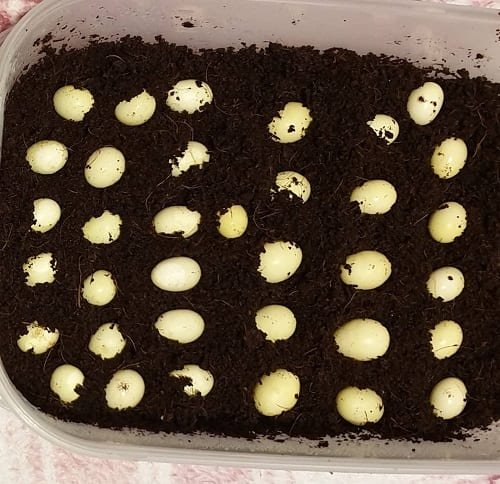
Step 3: Incubate the eggs in the snail egg incubator
After preparing the snail eggs incubator, it’s time to introduce the eggs. Use a hand trowel or your hand to open up the soil to about 2 inches deep. The diameter of the hole should be wide enough to contain your snails.
Next, use the plastic spoon to scoop the snail eggs into the hole in the incubation pen. After that, cover the snail eggs loosely with about 2 inches of soil. At this point, you are done incubating the snail eggs. Yippie!!
Do you remember I promised to tell you how to keep track of the hatching process?
Let’s go there…
Step 4: Track the hatching progress of the snail eggs
Tracking the hatching progress of snail eggs is very easy too. Start by burying the snail eggs in the soil, then get a sheet of paper and write out the date and number of eggs in the hole. This will help you know when you started incubation and when you will stop.
The incubation period is between 21 – 35 days. It means that the snail eggs will begin to hatch somewhere around the 21st day after incubation.
Naturally, when snail eggs hatch, they crawl out of the thin layer of soil covering them to the surface soil. However, not all of them tend to come out of the soil. So, you need to check after 21 days to get them out.
Using a plastic spoon, gently open the soil and pick out the hatched snails onto a plastic tray. Count and record the number of hatched snails and the number of eggs left. Make sure the sum of these numbers corresponds to the total number of snail eggs you put there.
When you are done picking the hatched snails cover up the remaining eggs for another 14 days. After 14 days have gone by, come back again and pick out any newly hatched snails. Also, discard all the remaining eggs in the snail incubation pen after that day.
Following all of the steps above will help you know the number of new snails you have on your snail farm. This number will help you know how many snails you are expecting to have after the farming period. It will also help you to project the amount of feed you need to get. Most importantly, it will help you forecast and calculate your revenue accurately.
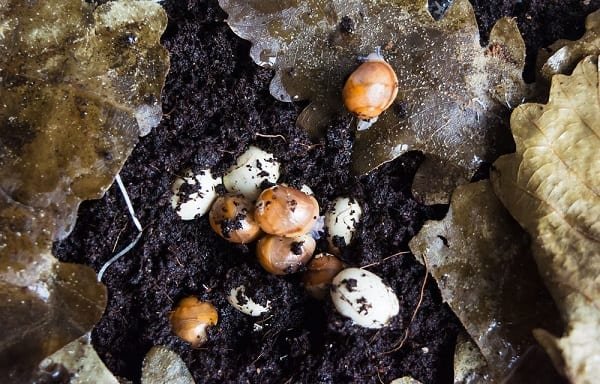
Step 5: Take care of the snail eggs while they are incubating.
We are almost at the end of this guide. I hope you have learned something so far.
I mentioned some tips on how to take care of snail eggs earlier in this article.
I will go ahead and repeat them here. Here are the ways
- Don’t pick up the snail eggs with your bare hands unless you know how to handle the eggs carefully.
- When digging for snail eggs, do so gently so that you don’t crush the eggs.
- Check the snail pen every week or bi-weekly to pick up new eggs.
- To maintain the moisture content of the soil, especially in the northern area, use a hand sprayer to spray water lightly on the soil.
- Do not waterlog the soil so that the eggs can hatch. When the water becomes too much in the soil, it destroys the hatching process.
- Ensure that the incubator has a consistent humidity and temperature throughout the incubation period.
- Remember you only need to buy the eggs 2 inches deep so that the weight of the soil will not kill the young hatchlings.
- Use only a plastic spoon to open the soil and remove all the hatched snails and then cover the remaining ones.
Step 6: Collect the new snail hatchlings and keep them in a new pen.
After you have finished hatching the snail eggs, collect the baby snails into a new pen.
Yet again, don’t pick up the baby snails with your bare hand so that you don’t crush their soft shells with your mighty hands.
The best snail farming equipment for picking up baby snails is a plastic spoon.
When you are done transferring the baby snails to a new pen make sure you provide them with some snail food.
The most essential food for a baby snail is calcium because it will help in strong shell formation.
Process of Hatching Snail Eggs- Video
Conclusion
Hatching snail eggs can be as easy as anything else.
How you carry out the process will determine whether you will get a lot of baby snails or only a few.
Besides getting a lot of snail hatchlings, one thing that is more important is how you care for the baby snails.
If you handle them carelessly, you might lose your precious snails because they are very delicate at a young age.
Use the information in this guide to properly hatch your snails and take care of them until maturity.
Frequently Asked Questions About How to Hatch Snail Eggs.
How can I hatch snail eggs at home?
Follow these six easy steps to hatch snail eggs at home.
Step 1: Collect the eggs from the snail pen
Step 2: Prepare an incubator for hatching the snail eggs.
Step 3: Incubate the eggs in the snail egg incubator
Step 4: Track the hatching progress of the snail eggs
Step 5: Take care of the snail eggs while they are incubating.
Step 6: Collect the new snail hatchlings and keep them in a new pen.How long do snails take to hatch?
Snail eggs hatch between 21 – 35 days depending on the species of snail.
What do you feed a baby snail?
Aquatic baby snails prefer fish food but they may also eat aquatic plants. Baby land snails will prefer to eat lettuce and other soft vegetables like spinach. Read this article to learn more about the essential food for snails.


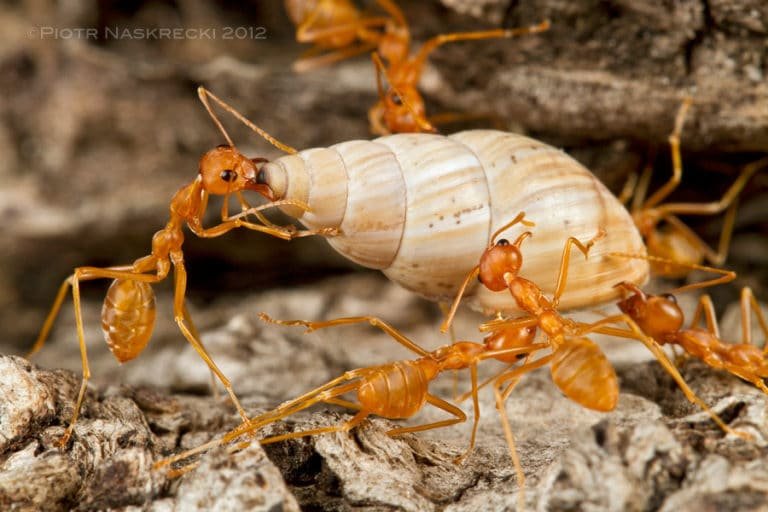

![How to Build Good Snail Housing [With Pictures]](https://agro4africa.com/wp-content/uploads/2017/05/free-range-snail-farm-768x566.jpg)

Thank you for your writeup. I picked up 7 snails last Saturday and to my surprise, I have one of them lay 12 eggs today. I have incubated the eggs in a disposable plastic plate as you taught, is it necessary for me to put holes on the cover of the plastic plate?
Thank you once again Sir, as I await your response.
Not necessary so that the humidity of the incubator can be maintained.
Gooday just read ur comment very impressive ND understanding,pls how will someone get rid of insects in snail ,thanks
Hi Ifeoma, we have an about the 8 Effective Ways to Get Rid of Ants in Snail Farm Very Fast
Does one need to cover the Tupperware containers during hatching process?
Yes, you need to cover the tupperware to maintain humidity in the incubator. Also, it prevents the soil from drying up.
Good morning sir, How many eggs can i start with?
There is no limit to the number of snail eggs that you can start with. Just make sure you have a conducive place for them to grow.
Please sir, when is the best time to start snail farming and where and how can I get a good breed of snails to start a snail farm .Am in Akwa Ibom State and how much is required for 50 snails.
Thanks, i hope to hear from you soon
I find this article interesting.
Learnt all am doing wrong.
But can the egg not stay in the pen with the adult snail.
To avoid cannibalism and crushing of the young snails, it is best to separate them.
Thanks Mr Mbazu
You’re welcome.
Good evening Mr Chibuzor.Your articles on snail farming are very informative and interesting.
Thank you very much for a good job.
I want to establish a snail farm so please use my email address to contact me so that we discuss details. Than you.
Awesome. You can always reach out to me via our official email address [email protected].
Am wigo. Tnks v much for ur very enlightening piece. Kindly reach me. Tnks
Hello Wigo. If you have any enquiries, please send an email to [email protected]. Cheers.
Thanks for teaching,I really enjoyed what I saw.
Great
I really enjoyed this articles, looking forward to hook up with you.
Any time.
I am in Bayelsa too pls kindly reach me sir 08167337701 on WhatsApp
Yes that’s possible.
Wow this is so informative I just picked about 60 snail eggs this morning I would like to know what kind of soil is best for incubating the snails
Same loam soil that you used in the snail pen.
Thanks and God bless you plenty ,am about to start my snail farming will get back to you soon
Cool… Good luck to you.
God bless you plenty so educative and easy to understand am about to start my snail farming will get back to you soon as I start
Good luck to you.
This is really good for newbies like me. Thanks for the wonderful job Sir. I have joined the WhatsApp group Sir.
I googled this,to get here because I just found eggs in my snailery and I don’t know what to do, am glad I got here. Thanks once again
You’re welcome.
I want to join the WhatsApp group but it’s full, is there any other group i can join
Please, try again.
Good and interesting
Thanks.
This is apt and very informative. Thanks for the good job
Thanks, Femi.
Hi I have 6 snails that bred it’s been a couple days now no eggs when do they lay them and how much snails will I get?
When they lay depends on how they feed and their environment while the number of eggs will depend on the species of the snails. Everything varies based on care and the snail species.
Hello Chibuzor, thank you for this well thought through communication.
I sent you an email yesterday 04/03/2021 regarding a delay I am experiencing with the hatching of my snail eggs. Kindly help with a response.
Sure, I believe I have replied to all my recent emails. cheers.
Thank you so much oga chibuzor, I has been so educational
You are welcome, Michael.
Am indeed grateful for your keen effort in explaining the steps I’m caring for snail eggs and the young one,a good lesson I have learn,thanks millions of time.pls,if I may asked whatvis the composition for the best growers feed for snail,
Please read this article for the answer I have written extensively on that subject. http://agro4africa.com/essential-food-for-snails/
This is very helpful I must say.
Thanks so much, am on a mini snailery farming of 50 nails, they started laying eggs but the sizes of the eggs differs which two distinct sizes just as the sizes of my snails differs, is this difference as a result of the sizes or their specie differs.
Also, unfortunately i picked all the eggs with bare hands before reading your article, is there hope for them hatching?
The sizes of eggs is as a result of their species.
For the hatchability of the eggs, let’s be hopeful.
Thanks for the teaching . I will try to practice what I have learnt
You are welcome
Thanks a lot. I just stumble on your comment when looking up information on hatching of eggs after what I think is a failed experiment on attempt to hatch 2 snail eggs that dropped from a snail we purchased. I did almost all this and even wet the stuff every other day but no acting take place now for over 23 days. i am still watching and taking more interest in snail farming acquiring more sanils
Nice. I guess the eggs are from a stressed snail.
So, it’s possible that the eggs are not in good condition.
But, it’s okay to wait and see
Very educative, thanks a lot
Pls I have a small snailery it layer small size eggs like 3mm diameter and 6mm diameter. Is it normal?
Does it lay in large quantities? From my guess, you probably have the Achatina achatina species. They tend to lay that much.
Great literature. Thanks for sharing. I had about about 200-300 eggs and its almost 2months now and not a single one has hatched. I actually did all the wrong things by touching, watering etc. With this method subscribed, should the hatchery be covered airtight to retain the moist ?
Not at all. You don’t need to make it airtight. As long as the soil is covering the eggs, that’s okay.
Oga Mbazu.. thank you for ur big heart. Am new to this venture just with a few snails to start with. One of my snails layed 5 eggs two days after arriving at the pen. Thereafter no more laying. What could hv gone wrong?
It will lay again. Just give it time.
Thank you for the video.
Please I will like to know, is there need to wet the sand after the first water added to the sand when the eggs are put into hatchery?
Wetting the soil will depend on your location and the water holding capacity of the soil.
If you are in the southern or eastern part of Nigeria for instance, you may only need to mix the soil with water loosely before incubating the eggs.
After that, there will be no need to water the soil again as the soil I the southern and western species holds water for a very long time.
On the other hand, if you are in the Norther part characterized by hot weather and loose soil that cannot hold water for long. In such area, you need to lightly water the incubator every day.
Just make sure the water you apply is not too much so that it does not make contact with the snail eggs.
In the western Nigeria, you may wet the soil every 5 days.
These specification may differ from place to place.
The goal is to make sure that the soil does not dry out, but at the same time remain loose enough for the young snails to come out when hatched.
You are wonderful bro.I love your write up and I have put it into practice.God bless you.
You are welcome, Adebusola.
This note is rely helping me but can I put my eggs in a plastic container that has hole on the cover pls answer.
Tnks
As long as the snail eggs are covered properly, you are good to go.
Wow. What a detailed explanation. Thanks so much for this.
Just started a small snailery at my backyard using old tyres. They started laying, can I put the incubator inside the house and do I need to water it everyday, if yes?
Thank you.
You can have the incubator outdoors in the same place where the snails are. Just ensure it has enough shed and the same cool temperature of the grown snails.
Thanks so much the for education, I’m in Ghana and I just started my snail farming
Good one, Samuel
Successful in your snail farming business.
Please I tried the number you left here but it’s not connecting. I would love to speak with you cos I want to learn more things, probably visiting your farm. Please contact or chat me via WhatsApp on 08104851992
Hello Sixtus, I’d prefer you reach me via my email address, [email protected]
Cheers.
I am sincerely grateful for this. I am calling your number right away.
You are welcome Moriyike.
Please contact me via my email address, [email protected]
I will respond immediately.
I really enjoyed the educative session learning how to hatch snail eggs. I will put it into practice and possibly feed you back. Thanks a lot.
Thanks for your compliment, Markus.
I pray it turns out well for you.
I look forward to getting your feedback.
Cheers.
Wonderful article and very educative as well.
Thank you for you compliment, Taiwo.
Am greatful for this post. I need it now. Thank you very much.
You are welcome, Glory.
The teaching is very comprehensive. God bless you. I hope t contact you for my intended commercial snail farm project.
Thank you very much for your compliment.
Please send a Mail to [email protected] let’s chat
Thanks for this information, during incubation, do we still need to be wetting the soil with water before hatched, if yes,what is the frequency. Thanks
To maintain the moisture content of the soil especially in the northern area, use a hand sprayer to spray water lightly on the soil.
Just make sure you don’t leave the soil waterlogged
Great lesson learned. Thanks
You are welcome.
Glad you learned some tips on how to hatch your snail eggs.
This is educative, i just incubated 104 eggs today for my practical training.
Wow! That’s cool. Please keep us updated with your progress.
You’re great love your teaching God Will bless you
Thank you very much😇
Thanks for sharing
This is awesome
Well done brother. You are doing great work
Thanks a lot
The content of this lecture is expository and easy to understand.
Thank you very much.I want to start my own snail farming next year.When is the best month to start in the year .
You can start at any time.
Good job bro. Please I need where to source for snail breeder within Lagos preferbly ikorodu. I will appreciate if u can be of help.
Here is my WhatsApp num 08142*****
I truncated your comment to protect you from spammers.
I’m sure you’ve gotten the quantity of snails you need.
This is cool. Well-done!
Thanks a lot Dapo.
Thanks alot for your information,please where do you have your farm and do you sell snails yet?
We have our farm in Bayelsa state, Nigeria.
We are a major supplier of POL snails across Nigeria.
We can supply to you anywhere you are. Our minimum order quantity is 100 snails.
Please send an email to [email protected] or call send a WhatsApp message to 09055506255
Interesting
Thanks @Abiodun